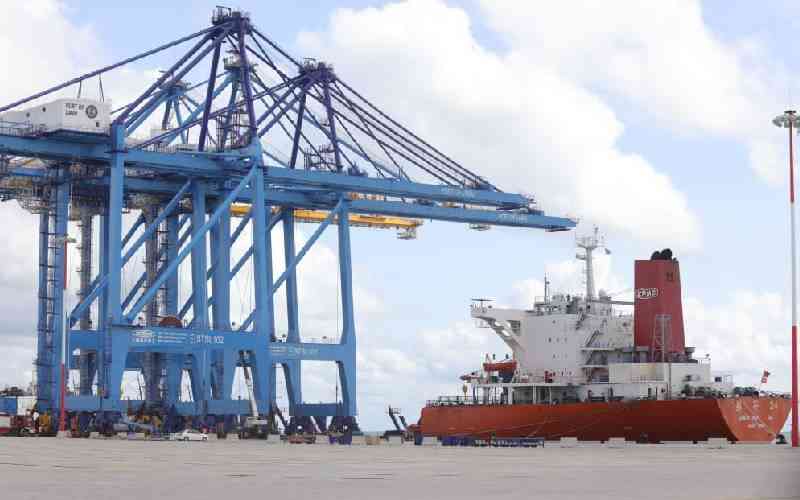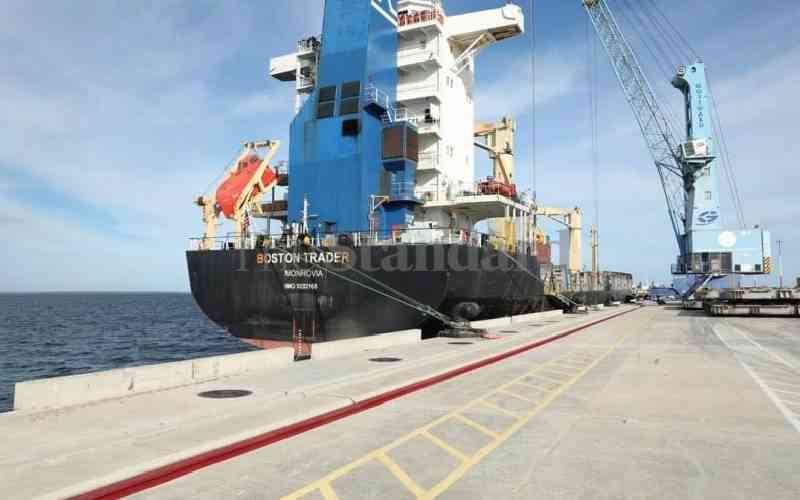 |
|
Controller of Budget, Mrs Agnes Odhiambo at her office. (Photo: Mbugua Kibera) |
NAIROBI, KENYA: Counties had been allocated Sh261 billion, of which Sh160 billion was for recurrent expenditure and Sh100 billion for development.
Absorption rate is the actual expenditure as a percentage of approved budget, and only six counties were rated below average in utilising the money meant for grassroots development.
The report, Annual Budget Implementation Review, is the first of its kind by the CoB since the establishment of county governments in March 2013 and covers the period between July 2013 and June 2014.
County governments generated an aggregate of Sh26.3 billion in local revenue, accounting for 48.5 per cent of the annual target. Local revenue collection peaked in March 2014 due to renewal of single business permits with the least revenue collected being in September 2013.
Absorption of funds improved from Sh86.7 billion (32.2 per cent) during the third quarter to Sh169.4 billion (64.9 per cent) at year end. Recurrent expenditure recorded the highest absorption rate at 82.7 per cent while development expenditure stood at 36.4 per cent.
Nyeri County attained the highest overall absorption rate at 93.9 per cent of the annual budget followed by Bomet and Nyandarua counties, which recorded rates of 93.5 and 85.3 per cent respectively.
Counties with lowest absorption rates were Tana River (41.3 per cent), Turkana (41.9 per cent), and Lamu (44.2 per cent).
The report, released by Controller of Budget Agnes Odhiambo, also indicates that the total development expenditure by the counties was Sh36.6 billion, or 21.6 per cent of their total expenditure.
This represents 70.8 per cent of the funds released for development expenditure and 36.4 per cent of the total annual development budgets for the counties.
Development expenditure
The counties that achieved the highest spending on development were Machakos at Sh2.7 billion, Wajir (Sh2.6 billion) and Turkana (Sh1.9 billion).
Tana River County had the least development expenditure at Sh32.2 million, followed by Kisumu (Sh98.9 million) and Mombasa (Sh107.9 million).
Bomet, Wajir and Trans Nzoia counties recorded the highest absorption rates of their development budget at 92.4 per cent, 78.2 per cent and 74 per cent respectively.
Mombasa County recorded the lowest absorption rate of development budget at 2.4 per cent while Tana River and Kisumu absorbed 2.7 and 4 per cent respectively.
An analysis of the expenditures indicates that there was a considerable increase during the fourth quarter of the Financial Year where Sh82.6 billion was spent compared to Sh2.8 billion, Sh28.9 billion and Sh45.1 billion spent during the first, second and third quarters respectively.
Stay informed. Subscribe to our newsletter
The counties that achieved the highest total expenditures were Nairobi, Kiambu, and Machakos at Sh17.8 billion, Sh6.7 billion, and Sh6.1 billion respectively, while Lamu spent Sh729 million, Tana River (Sh1.3 billion) and Elgeyo Marakwet (Sh1.7 billion).
During the period under review, the counties that recorded the highest expenditure as a proportion of funds released were Nairobi at 168.7 per cent, Tharaka Nithi at 102 per cent and Nyeri at 98.5 per cent.
Expenditure by Nairobi and Tharaka Nithi counties exceeded the total funds released during the period under review, while Tana River, Uasin Gishu and Lamu counties recorded the lowest expenditure as a proportion of funds released at 48 per cent, 61.6 per cent and 66.4 per cent respectively.
On development expenditure, Wajir, Turkana and Bomet Counties had the highest proportion of total expenditure at 57.8 per cent, 56.5 per cent and 48.4 per cent respectively.
Counties that registered the lowest proportion of expenditure on development activities were: Mombasa, Kisumu and Tana River at 2.1 per cent, 2.2 per cent and 2.4 per cent respectively.
In this first year of operation, the counties were expected to spend Sh254.1 billion but cumulatively, they spent Sh151.6 billion or, 58.1 per cent of the aggregate budget.
implementation challenges
The report attributes the poor absorption to infrastructural challenges like the Integrated Financial Management Information System (Ifmis), inadequate staff capacity, budget execution gaps and budgetary constraints owing to delays in releasing of funds by the national government.
Underperformance in local revenue collection, inadequate management controls including the lack of internal audit arrangements, and role conflict between the County Executive and the County Assembly were also some of the challenges that affected the counties.
The total development expenditure by the governors was Sh36.6 billion, or 21.6 per cent of the total allocation, which represents 36.4 per cent.
Nairobi received the highest amount released from the Consolidated Fund to the County Revenue Funds at Sh9.5 billion, followed by Turkana at Sh7.7 billion and Kakamega at S 6.8 billion.
The counties that received the lowest amount were Lamu at Sh1.5 billion, Isiolo at Sh2.2 billion and Tharaka Nithi at Sh2.3 billion.
In the period under review, counties were allocated an aggregate of Sh3.2 billion for the payment of sitting allowances for the Members of the County Assembly but actual expenditure was Sh2.4 billion, which represents 74.6 per cent of the budgetary allocation.
The governments spent Sh51.7 billion on operations and maintenance, or 30.5 per cent of the total expenditure allocation.
The counties were allocated Sh9.8 billion for domestic and foreign trips, of which Sh7.7 billion was spent.
 The Standard Group Plc is a
multi-media organization with investments in media platforms spanning newspaper
print operations, television, radio broadcasting, digital and online services. The
Standard Group is recognized as a leading multi-media house in Kenya with a key
influence in matters of national and international interest.
The Standard Group Plc is a
multi-media organization with investments in media platforms spanning newspaper
print operations, television, radio broadcasting, digital and online services. The
Standard Group is recognized as a leading multi-media house in Kenya with a key
influence in matters of national and international interest.
 The Standard Group Plc is a
multi-media organization with investments in media platforms spanning newspaper
print operations, television, radio broadcasting, digital and online services. The
Standard Group is recognized as a leading multi-media house in Kenya with a key
influence in matters of national and international interest.
The Standard Group Plc is a
multi-media organization with investments in media platforms spanning newspaper
print operations, television, radio broadcasting, digital and online services. The
Standard Group is recognized as a leading multi-media house in Kenya with a key
influence in matters of national and international interest.









